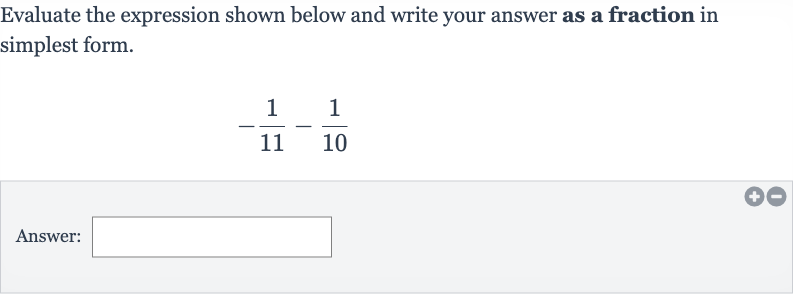AI tutor
Welcome to Bytelearn!
Let’s check out your problem:

Evaluate the expression shown below and write your answer as a fraction in simplest form.Answer:
Full solution
Q. Evaluate the expression shown below and write your answer as a fraction in simplest form.Answer:
- Identify LCD: Identify the Least Common Denominator (LCD)To add or subtract fractions, we need a common denominator. The denominators here are and . The least common denominator (LCD) for and is their product since they are coprime (have no common factors other than ).LCD = .
- Rewrite with LCD: Rewrite the fractions with the LCD as the new denominatorWe convert each fraction to an equivalent fraction with the LCD as the denominator. becomes because . becomes because .
- Add fractions: Add the fractionsNow that we have common denominators, we can combine the numerators..
- Simplify fraction: Simplify the fractionWe look for any common factors between the numerator and the denominator to simplify the fraction. The numbers and do not have any common factors other than , so the fraction is already in its simplest form.
More problems from Multiplication with rational exponents
QuestionGet tutor help
QuestionGet tutor help
QuestionGet tutor help
QuestionGet tutor help
QuestionGet tutor help
